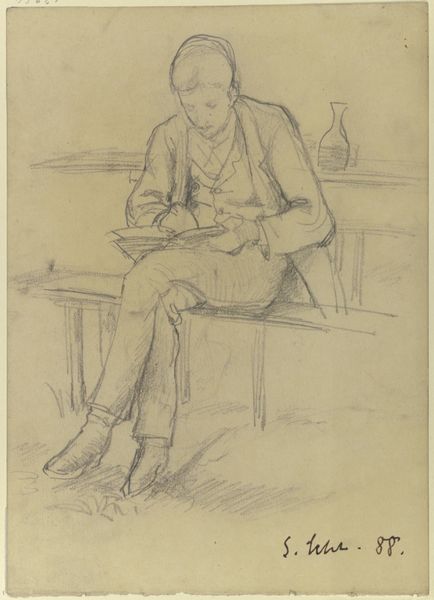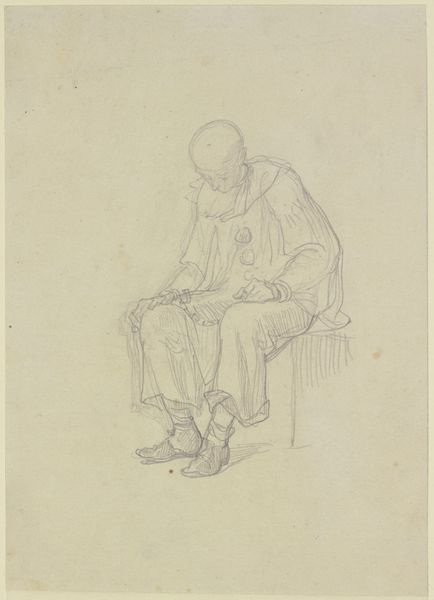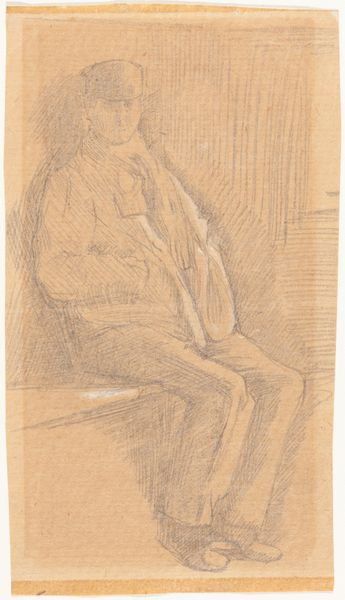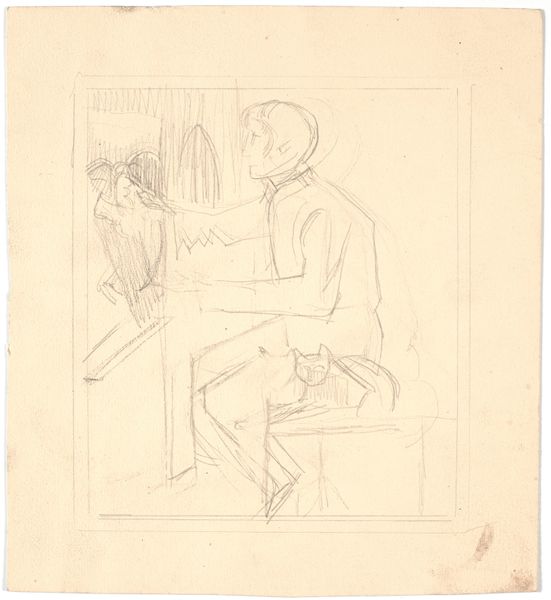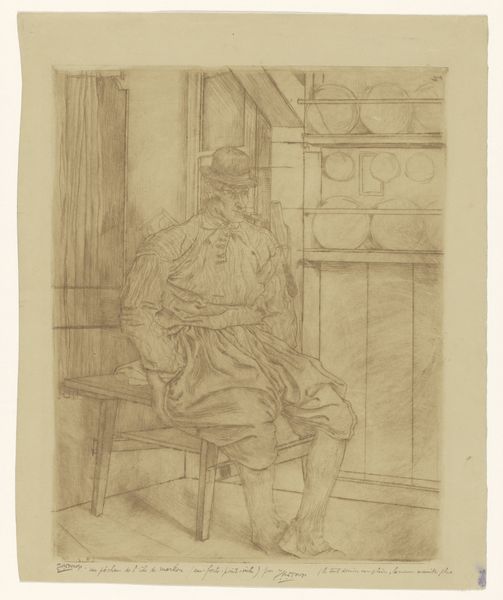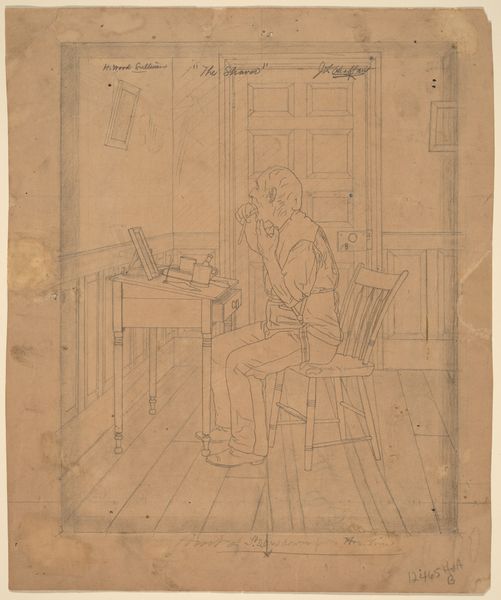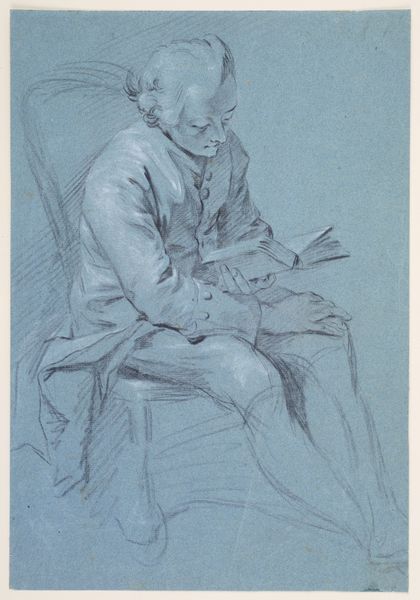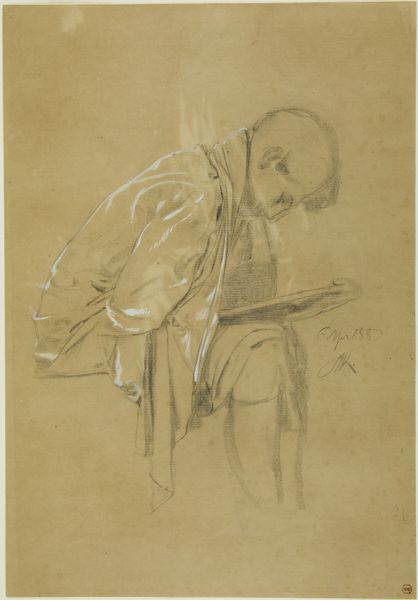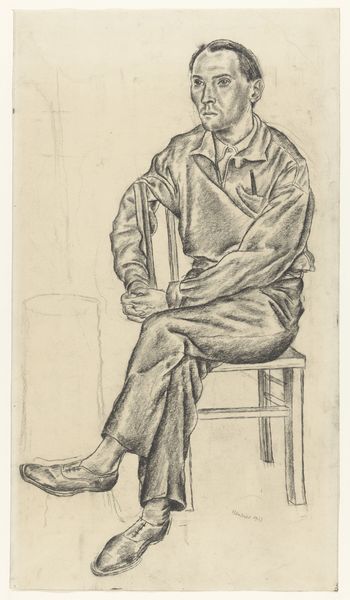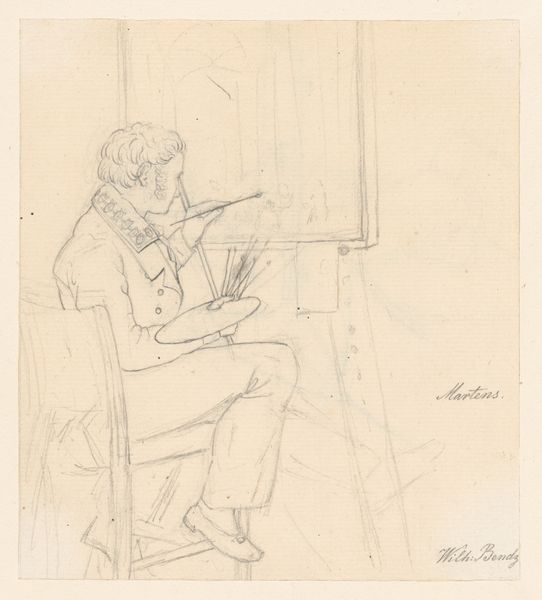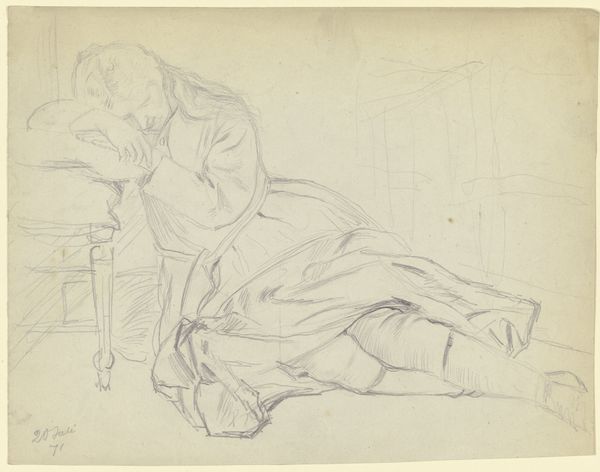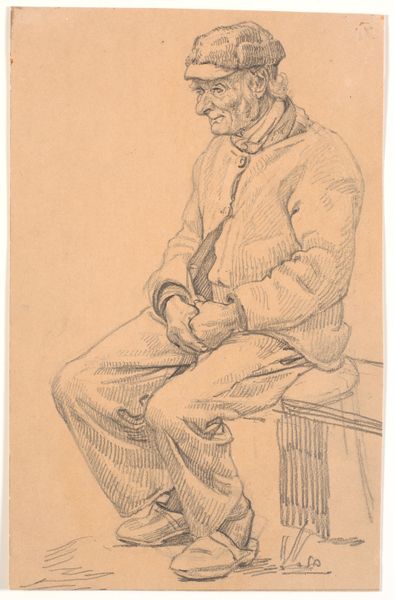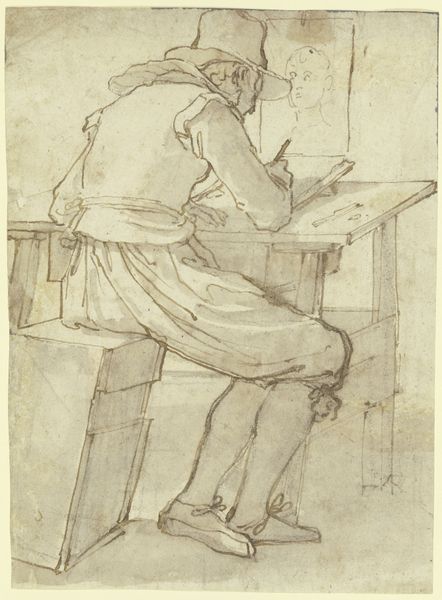
drawing, pencil
#
portrait
#
drawing
#
pencil sketch
#
pencil
#
realism
Dimensions: height 445 mm, width 305 mm
Copyright: Rijks Museum: Open Domain
Editor: This is "De graveur Raeder" by Jan Veth, a pencil drawing that dates between 1874 and 1925. It shows a man intensely focused on his work. What's striking to me is how the artist captures this quiet concentration. What do you see in this piece? Curator: Beyond the visible portrayal of concentration, I see a potent representation of labor and its associated social implications. Realism in art, like we see here, often served as a commentary on the changing socio-economic landscapes of the time. How do you think Veth's choice of subject – an engraver – reflects broader shifts in the late 19th and early 20th centuries? Editor: It’s interesting to think about. Engraving feels like a craft on the cusp of being overtaken by new technologies… maybe Veth is making a statement about preserving traditional skills? Curator: Exactly. And if we consider art through a gendered lens, it's important to recognize that artistic professions weren't equally accessible. Who had the privilege and access to cultivate such crafts, and whose stories remain untold or unseen? Veth's realistic, yet sympathetic portrayal could be interpreted as a conscious decision to validate the engraver's contribution in a rapidly industrializing society. Editor: So, it's not just a portrait, but also a kind of social document? Curator: Precisely. This work invites us to consider issues of labor, class, and artistic representation during a transformative period. Considering his focused pose, one has to ask if the portrait aestheticizes a man doing 'honest work', too? Editor: That's given me a whole new way to appreciate it. It’s like looking at a story about social change, disguised as a simple portrait. Curator: Yes, and understanding that perspective enriches our interpretation, connecting the art to a wider dialogue on social progress, power dynamics, and the evolution of artistic practice.
Comments
No comments
Be the first to comment and join the conversation on the ultimate creative platform.
